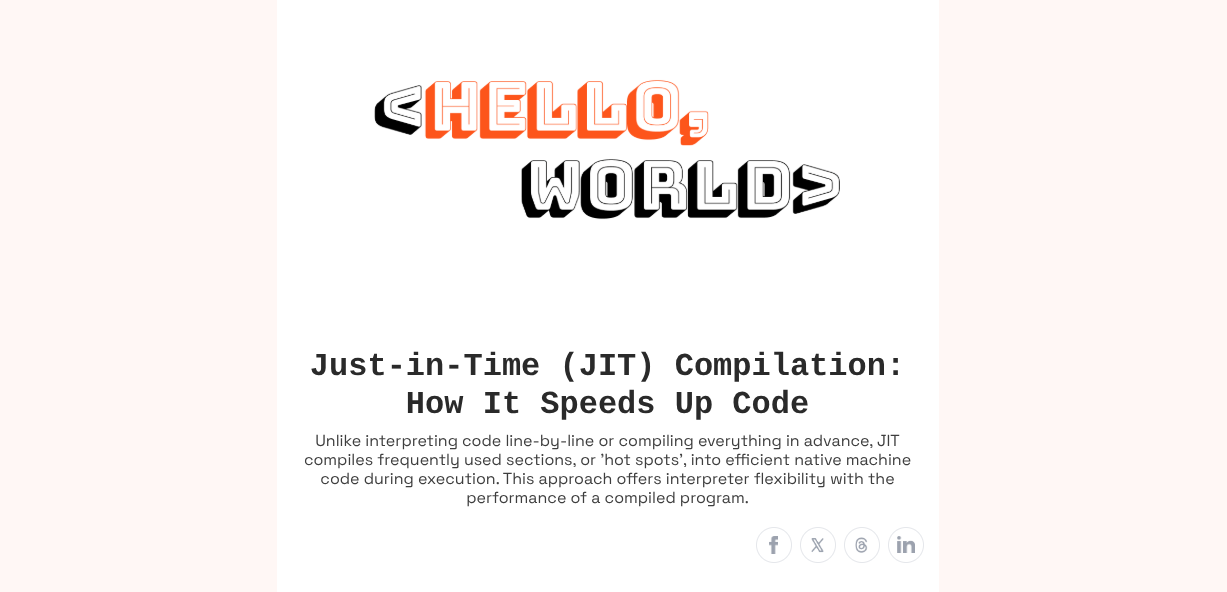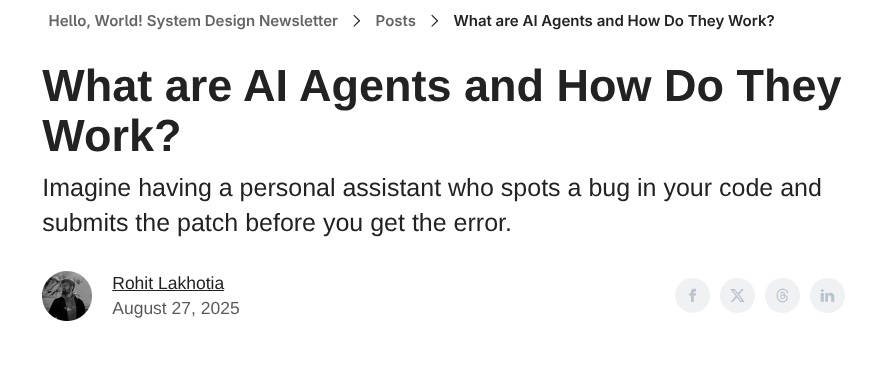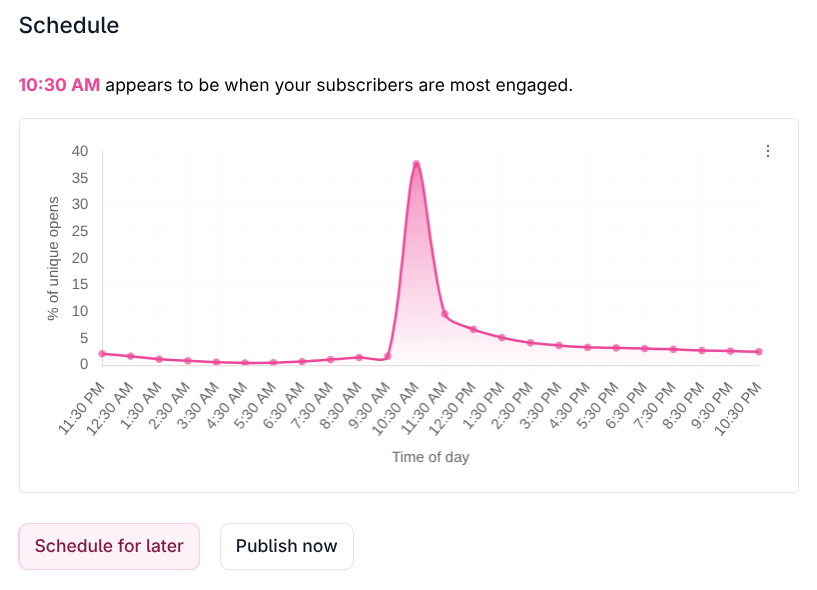What is a Newsletter and How to Write One
A newsletter is one of the most effective ways for businesses, creators, and organizations to connect directly with their audience. It’s a recurring email sent to a list of subscribers that delivers useful updates, stories, promotions, or insights. Unlike social media posts that depend on algorithms, newsletters land straight in the inbox giving you full ownership of your communication channel.
Beyond keeping your audience informed, newsletters can help boost sales, drive website traffic, and nurture long-term relationships. Plus, since email campaigns are easy to measure, you can analyze open rates, click-throughs, and engagement to fine-tune your strategy for better results.
Why Newsletters Matter More Than Ever
With growing uncertainty on social media platforms and the constant changes in algorithms, more brands and individuals are turning to newsletters. Owning your audience list means you’re not at the mercy of sudden platform shifts, it’s a reliable, personal, and consistent way to reach people.
But with so many newsletters flooding inboxes today, standing out is key. It’s not enough to simply share your latest blog posts or updates. A great newsletter feels personal, provides value, and makes readers want to open it every time.
If you are confused about which newsletter to choose, you can checkout our blog post on top 10 newsletters.
How to Build a Newsletter That Stands Out
When starting out, it’s easy to send content that feels generic. The secret to creating something people look forward to lies in understanding your readers and evolving based on feedback. Here’s what helps:
- Listen to your readers: Ask subscribers what they’re struggling with or what they’d like to learn. Their feedback is gold for shaping relevant content.
- Try different formats: Experiment with short tips, stories, images, or curated links. Over time, you’ll discover what resonates most.
- Study your analytics: Open rates, clicks, and unsubscribes tell you what works and what doesn’t.
- Ask for feedback regularly: Simple surveys can reveal what topics or formats your readers prefer.
Writing the Perfect Newsletter
A newsletter has two crucial elements: the subject line and the body content. Both need to work together to capture attention and keep readers engaged.
Crafting an Effective Subject Line
Your subject line decides whether your email gets opened or ignored. About one-third of readers open emails based solely on the subject line. Here’s what helps:
- Use emojis wisely: A small, well-placed emoji can boost open rates and make your email pop in crowded inboxes.
- Keep it short and clear: Make sure it’s easy to read on mobile devices, aim for under 50 characters.
- Personalize it: Including a subscriber’s name adds a friendly, human touch.
- Avoid clickbait: Overpromising can hurt your credibility.
- Spark curiosity: Give readers a reason to open your email without revealing everything.
- Test it on mobile: Most emails are read on phones, so check how your subject line appears in previews.
Take a look at this: 
Here, you can see a very crisp heading and subject that resonates what to expect from the newsletter, adding curiosity, short and clear.
Checkout the full article: https://hw.glich.co/p/just-in-time-jit-compilation-how-it-speeds-up-code
Writing Engaging Body Content
If the subject line grabs attention, the body is where you deliver real value. Here’s how to keep your readers hooked:
- Make it personal: Start with a friendly greeting and write as if you’re speaking to one person, not a crowd.
- Be authentic: Share real experiences, stories, or lessons. Authenticity builds trust and connection.
- Tell stories: People remember stories more than facts. Use your personal journey, challenges, or insights to make your newsletter relatable.
- Find your unique voice: Offer something no one else does whether it’s "behind the scenes" transparency, humor, or a recurring section like “meme of the week” or “project breakdown.”
- Encourage action: Every newsletter should have a clear purpose. End with a single, strong call to action like replying to a question, checking a resource, or joining a program.
- Watch your length: Around 200–700 words works well depending on your format. Shorter newsletters perform better for quick reads, while longer ones suit storytelling or detailed insights.
- Mobile-Friendly Design: Most people read newsletters the moment they arrive often through a mobile notification. It’s quick, easy, and convenient compared to sitting down at a desktop. Whether they’re having coffee, commuting, or relaxing, readers prefer to browse emails on their phones. That’s why your newsletter should be fully responsive and visually clear on every device, including smartphones, tablets, and iPads.
- Use Visuals: Visuals can instantly draw attention and make your newsletter more engaging. Images, illustrations, and icons help break up text, convey ideas faster, and strengthen your overall message especially when you’re defining or refreshing your brand identity. However, it should be balanced, visuals should complement your content, not overpower it, ensuring your newsletter stays both informative and visually appealing.
- Automate and simplify: Use tools or even AI assistants like ChatGPT to help brainstorm ideas, write multiple subject lines, or proofread faster. It saves time without losing your personal touch.
Take a look at this: https://hw.glich.co/p/what-are-ai-agents
The Best Practices
- Use a Recognizable Sender Name: Instead of sending emails from your company’s generic address, use your real name or a combination of both. People are more likely to open emails that feel personal and human rather than purely corporate.
For example: 
- Include an Opt-Out Option: Always stay compliant with email marketing regulations. Every newsletter should include an easy way for subscribers to unsubscribe. Most modern email platforms automatically include this feature, but it’s worth double-checking to ensure transparency and trust.
For example:  you will find these options at the end of every article that you recieve on your mail.
you will find these options at the end of every article that you recieve on your mail.
- Keep Your Subject True: Your subject line should capture attention without misleading readers. Whatever you promise in the subject line, make sure you deliver in the body of your email. Authenticity builds credibility and keeps people coming back.
- Create a Newsletter Template: Avoid the dreaded blank-page syndrome by setting up a reusable template. Whether it’s a visual design or a content structure (intro, main topic, CTA, etc.), having a framework helps you stay consistent and makes writing new editions faster. Here are some pretty good templates: https://blog.hubspot.com/marketing/email-newsletter-templates
- Maintain a Consistent Schedule: Consistency is one of the biggest factors in building reader loyalty. If you promise a weekly or monthly newsletter, stick to it. For example, my newsletter goes out every Friday at 6 a.m. Eastern subscribers now expect it with their morning coffee. Start with a frequency you can realistically maintain, it’s better to publish monthly and stick to it than to burn out trying to send weekly updates.
- Set Clear Expectations from the Start: When someone subscribes, send them a short welcome email. Introduce yourself, explain what kind of content they’ll receive, and how often they’ll hear from you. This early communication sets expectations and helps prevent unsubscribes later on.
- Keep Readers Engaged from Line to Line: Think of your email like a story, the goal of the first line is to get readers to read the next one. Use a conversational tone, avoid fluff, and make every sentence earn its place.
- Always Include a Clear CTA: Every newsletter should guide readers toward one specific action whether that’s reading a blog post, registering for a webinar, or checking out a product. Keep your call-to-action visible and direct, using either a button or a text link.
- Find the Best Send Time: Timing can make a huge difference. Studies suggest that newsletters sent between 9 a.m. and 11 a.m. tend to perform best, but you should test different days and times to see what works for your specific audience. For professionals, work hours often see higher engagement.
Check your analytics when your readers are most active

- Prioritize Readability: Avoid overwhelming readers with walls of text. Use short paragraphs, clear headings, and plenty of white space. A clean layout helps people skim easily especially important since most readers open newsletters on their phones.
At last, always remember
Writing a newsletter is part creativity, part strategy. Keep listening to your readers, experiment with new ideas, and refine based on what works. Over time, you’ll create a newsletter people actually look forward to opening every single week.
Shitty newsletters are the ones that are always trying to sell you stuff. Those are the ones that tend to get their domain reported for spam.
And, the purpose is to Inform and educate the audience.